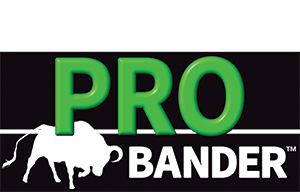Provides effective control of bleeding during the horn
tipping procedure and reduces pain response.
Tetanus toxoid must be used. (Especially critical if history of tetanus on your ranch or if cutting the horns very short.) It is important to read and follow vaccine instructions. For more information, contact your veterinarian.
CAUTION: You must adequately restrain the head. The head should be tied back to the side using a halter or nose tongs. A chute with adequate neck chain, neck extender or head sweep also works well. Electronic immobilizers are also a good choice when tipping horns. For your protection, safety glasses and gloves should be worn.
- Put on safety glasses and gloves.
- Place one loop over both horns so that it pulls up underneath both horns.
- Tension the loop. Tension until the tension indicator moves all the way back to the scribed line.

- Cut the Callicrate Loop as close to the SPOOL as possible.

- Saw horns off to desired length.
- Pack the open sinus cavity to avoid any contamination or fly infestation.
- REMOVE the loop after a few hours, giving the blood time to coagulate. Placing loop over the poll shuts off the blood supply to the entire top of the head, therefore, removal of the loop is imperative.
- Make sure to cut the loop in the center behind the horns or, if necessary, cut in the middle of the front.
- If doing large heads/horns we suggest using our larger prolapse loop to make it easier to get the loop over the horns.
Questions? Call 800-858-5974
“Great job of removing horns!”
